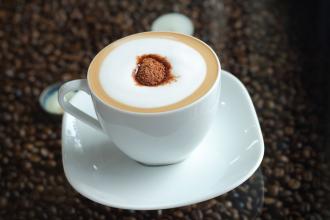Introduction of Coffee Bean Origin and Variety Coffee Bean species and comparison
The history of coffee cultivation in Colombia can be traced back to the Spanish colonial era in the sixteenth century. There are also many sayings about the history of coffee in Colombia:
One: it is said to have come from Haiti in the Caribbean via El Salvador in Central America.
Second, coffee beans were first introduced into Colombia in 1808 by a priest from the French Antilles via Venezuela. One of them is that the first coffee seeds from Colombia came from Venezuela through the province of Santander. [1]
Third: The earliest record of coffee cultivation in Colombia appears in a book entitled "The Illustrated Orinoca" by the Spanish missionary Jose Gumilla. He describes his travels on both sides of the Meta River in 1730, mentioning coffee plantations there. By 1787, other missionaries had spread coffee to other parts of Colombia.
Colombia, located in the northwest of South America, is a beautiful country with a long history. Indians have lived on this land since ancient times. It became a Spanish colony in 1531 AD and gained independence in 1819. It was renamed in 1886 to commemorate Columbus, the discoverer of the American continent. Colombia, beautiful mountains, beautiful scenery, pleasant climate, four seasons such as spring, fresh air. Colombia is rich in products, especially coffee, flowers, gold and emeralds known as the "four treasures." Today the country is the second largest coffee producer after Brazil, the world's largest exporter of Arabica coffee beans and the world's largest exporter of washed coffee beans. Often described as having a silky texture, Colombia coffee has the best balance of all coffees. It tastes soft, silky, and ready to drink, and it has earned a reputation that no other coffee can match: "green gold."
Species morphology editor
Colombia coffee plant morphology
Colombia coffee plant morphology (10 photos)
Colombia coffee varieties are mainly small coffee. Plants are small trees or large shrubs, 5-8 meters high, usually multi-branched at the base; old branches are gray, nodes expand, young branches glabrous, compressed. Leaves thinly leathery, ovate-lanceolate or lanceolate, 6-14 cm long, 3.5-5 cm wide, apex long acuminate, acuminate 10-15 mm long, base cuneate or slightly obtuse, rarely rounded, entire or shallowly undulate, glabrous on both surfaces, with or without pits in axils of lower veins; midvein raised on both surfaces of leaf blade, lateral veins 7-13 on each side; petiole 8-15 mm long; Stipules broadly triangular, born at the top of the young branches conical long pointed or awned tip, born at the top of the old branches are often pointed, long 3-6 mm. Cymes several clustered in leaf axils, each inflorescence 2-5 flowers, without pedicel or with very short pedicel; flowers aromatic, pedicels 0.5-1 mm long; bracts more or less united at base, dimorphic, 2 broadly triangular, nearly equal in length and width, 2 lanceolate, 2 times as wide, foliaceous; calyx tubular, 2.5-3 mm long, calyx limb truncated or 5 denticulate; Corolla white, length varies with species, generally 10-18 mm long, apically often 5-lobed, rarely 4-or 6-lobed, lobes often longer than corolla tube, apically often obtuse; anthers protruding outside corolla tube, 6-8 mm long; styles 12-14 mm long, stigmas 2-lobed, 3-4 mm long. Berry broadly elliptic when ripe, red, 12-16 mm long, 10-12 mm in diam., exocarp dural, mesocarp fleshy, sweet; seeds raised abaxially, ventral plane, longitudinally grooved, 8-10 mm long, 5-7 mm in diam. Flowering March-April

Important Notice :
前街咖啡 FrontStreet Coffee has moved to new addredd:
FrontStreet Coffee Address: 315,Donghua East Road,GuangZhou
Tel:020 38364473
- Prev

Coffee species introduction Coffee Tree introduction Coffee planting method
Arabica was the only kind of coffee beans, then in the 19th century, there was a large area of diseases and insect pests, coffee growers began to look for other varieties of coffee resistant to diseases and insect pests, so Rob's special was discovered and began to be planted artificially. Robert's special growth in low-altitude areas, characterized by resistance to diseases and insect pests, cold, drought resistance, a word description, thick, but the taste is relatively comparative
- Next

What kinds of coffee beans do you have? what is the type and taste of coffee?
First, Brazil (South America) Santos coffee: taste mellow, neutral, can be directly boiled, or mixed with other kinds of coffee beans into a comprehensive coffee, is also a good choice. Second, Columbia (South America) Manning: the palate is rich and solid, with a pleasant sour taste. The smell is mellow, moderate acidity, rich sweetness, very intriguing, suitable for deep baking, emitting a strong
Related
- Does Rose Summer choose Blue, Green or Red? Detailed explanation of Rose Summer Coffee plots and Classification in Panamanian Jade Manor
- What is the difference between the origin, producing area, processing plant, cooperative and manor of coffee beans?
- How fine does the espresso powder fit? how to grind the espresso?
- Sca coffee roasting degree color card coffee roasting degree 8 roasting color values what do you mean?
- The practice of lattes: how to make lattes at home
- Introduction to Indonesian Fine Coffee beans-- Java Coffee producing area of Indonesian Arabica Coffee
- How much will the flavor of light and medium roasted rose summer be expressed? What baking level is rose summer suitable for?
- Introduction to the characteristics of washing, sun-drying or wet-planing coffee commonly used in Mantenin, Indonesia
- Price characteristics of Arabica Coffee Bean Starbucks introduction to Manning Coffee Bean Taste producing area Variety Manor
- What is the authentic Yega flavor? What are the flavor characteristics of the really excellent Yejasuffi coffee beans?

